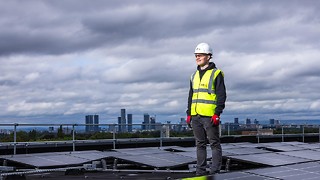What the media get wrong about male violence against women
When it comes to gender-based violence, the media must report the whole story, and all of the stories

#MeToo. Sarah Everard. Gisèle Pelicot. Every year, every month, every day, the news is filled with stories about another woman that has been harassed, assaulted, raped, or murdered by men. It has been described as a ‘national emergency’ by the National Police Chiefs’ Council. After years of inertia, we are starting to see changes in society surrounding misogyny and femicide in a number of ways. But, one industry that has not yet reckoned with its role in upholding this system is the media itself.
The media wields a lot of power when it comes to this issue; they are the ones telling us about these instances, after all. Some journalists, like Jodi Kantor and Meghan Twohey, have been instrumental in uplifting women’s voices and sparking international conversations. Unfortunately, the media culture in general has shied away from real accountability and conversations, abdicating its societal responsibility in the process.
To start with, the name “violence against women” only tells half the story. These three words have been used to define the conversation, appearing in countless newspapers and broadcasts on the subject. I find it incredibly frustrating that these words frame the dialogue on this problem, without actually drawing attention to the most important factor: men. Without naming this epidemic specifically as male violence, this phrase makes it seem as though some invisible, elusive phantom is committing these acts against women, displacing blame and responsibility from the conversation. We cannot stop the violence unless we acknowledge, head on, who the perpetrators are.
“The name violence against women only tells half the story”
Far too many media narratives focus almost microscopically on the action of the eventual violence and neglect to thoroughly report on the culture surrounding it. Dozens of articles have been written about the horrific actions of David Carrick. Fewer have been written (thus far) about the four Met officers now facing disciplinary proceedings for failing to investigate his abuses for years. Similarly, whilst a lot of media attention was paid to Wayne Couzens’ actions immediately following Sarah Everard’s death, very few articles have been written about the Angiolini enquiry, that investigates how Couzens was able to work for three separate police forces, despite having serious allegations against him for years. By focusing largely on only the most violent acts of specific individuals, the media distances these men from the rest of society, presenting them as lone abusers rather than ones that have been facilitated and abetted by others for years.
“The media is saying that violence against white women is more worthy of attention than violence against women of colour”
The media also play a powerful role in choosing which stories are be told, in a way that often pushes the stories of more marginalised communities to the sidelines. Sarah Everard’s abduction, rape, and murder rightly led news headlines and broadcasts for weeks. However, far less attention was paid to women like Sabina Nessa and Zhe Wang. Nessa’s sister, Jebina Yasmin Islam, has called out the media for their different responses, saying that “maybe it was down to her ethnicity”. Additionally, despite statistics showing that 62% of femicide victims in London in 2023 were black, violence against women of colour is not given nearly as much media attention as violence against white women. By consistently failing to report equally on victims of male violence, and to engage in conversations surrounding misogynoir and the intersection of race and gender, the media is saying that violence against white women is more worthy of attention than violence against women of colour.
Trans women and transmisogyny in turn are routinely excluded from the conversations around male violence against women. Amidst the many deplorable actions made in the reporting of Brianna Ghey’s murder, The Times edited an article to remove references to Brianna as a girl and replace them with her deadname. Only one article (to my knowledge) ever referenced her killing as a potential crime against women and girls, and described how Brianna’s lack of a Gender Recognition Certificate may prevent her murder from being recorded as gender-based violence.
Of course, transphobia and transmisogyny deserve dedicated attention and investigation in reporting, but to not include Brianna’s story, and those of other trans women, as examples of violence against women and girls does them a huge disservice. It also further enforces the false and harmful division often imposed by Trans Exclusionary Radical Feminists, or TERFs, that leads to a fracturing of attention and resources that impede real solidarity and progress.
The media plays a vital part in shaping public perception and conversation. For too long, it has failed in its duty to do so responsibly. It is imperative that we use the role of the media to help facilitate meaningful change, rather than continuing to contribute to the status quo. Only when the news calls out male violence against women for what it is, and draws attention to its intersections, can we really confront all aspects of this epidemic head-on.
 News / Uni offers students £55k in payouts31 October 2025
News / Uni offers students £55k in payouts31 October 2025 News / Uni error forces deeper spending cuts31 October 2025
News / Uni error forces deeper spending cuts31 October 2025 News / Students launch women’s society excluding trans women31 October 2025
News / Students launch women’s society excluding trans women31 October 2025 News / Students allowed to use AI, says new uni guidance31 October 2025
News / Students allowed to use AI, says new uni guidance31 October 2025 News / College rowing captains narrowly vote to exclude trans women31 October 2025
News / College rowing captains narrowly vote to exclude trans women31 October 2025









